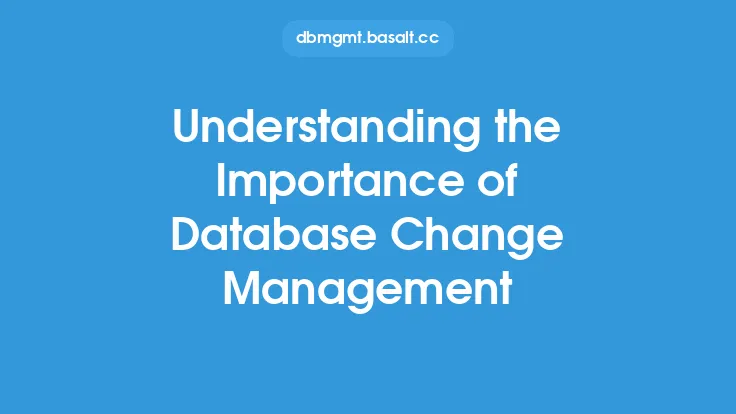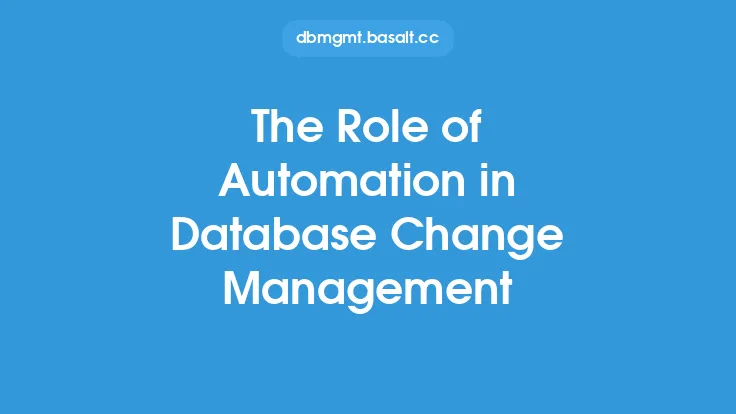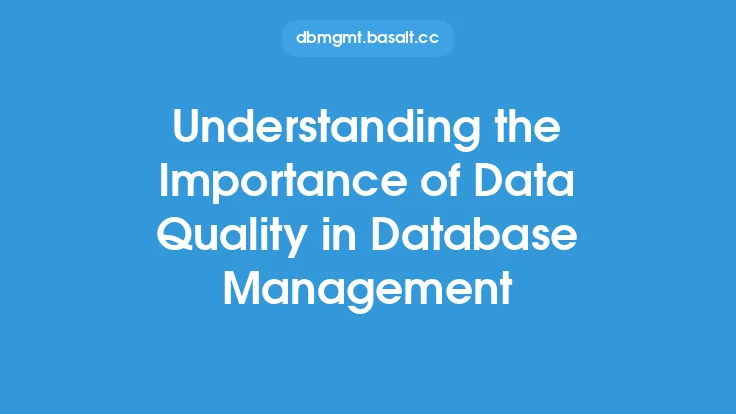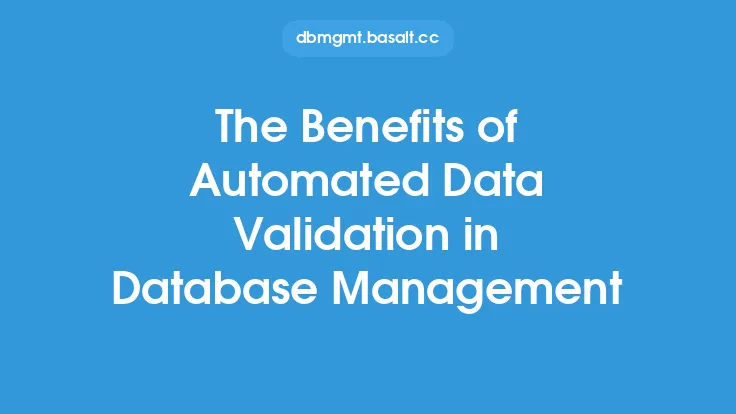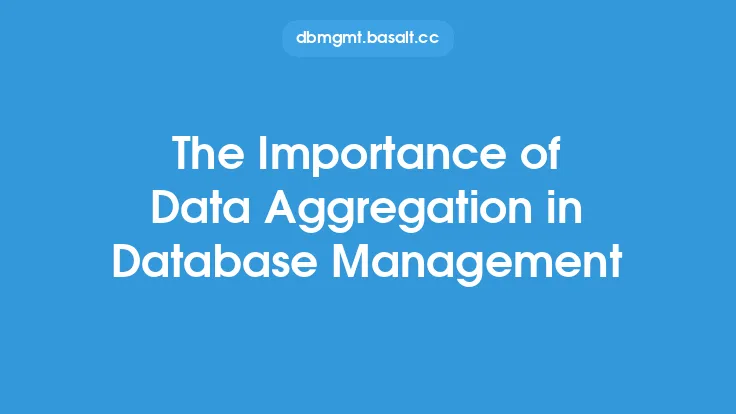Measuring the success of database change management initiatives is crucial to ensure that the changes made to the database are effective, efficient, and align with the organization's goals. It involves tracking and evaluating the outcomes of these changes to identify areas of improvement and optimize the change management process. In this article, we will delve into the details of measuring the success of database change management initiatives, exploring the key performance indicators (KPIs), metrics, and best practices to help organizations achieve their database change management objectives.
Introduction to Database Change Management Metrics
Database change management metrics are quantifiable measures used to evaluate the success of database change management initiatives. These metrics provide insights into the effectiveness of the change management process, helping organizations to identify areas of improvement and optimize their database change management strategies. Some common database change management metrics include:
- Change throughput: The number of changes implemented within a given timeframe.
- Change success rate: The percentage of successful changes compared to the total number of changes attempted.
- Mean time to recover (MTTR): The average time taken to recover from a failed change.
- Mean time between failures (MTBF): The average time between failed changes.
- Change lead time: The time taken to implement a change from the moment it is requested.
Key Performance Indicators (KPIs) for Database Change Management
KPIs are measurable values that demonstrate how effectively an organization is achieving its database change management objectives. Some essential KPIs for database change management include:
- Change implementation rate: The number of changes implemented per unit of time.
- Change failure rate: The percentage of changes that result in errors or failures.
- Database downtime: The amount of time the database is unavailable due to changes or other issues.
- Data integrity: The accuracy, completeness, and consistency of the data in the database.
- Compliance: Adherence to regulatory requirements, industry standards, and organizational policies.
Best Practices for Measuring Database Change Management Success
To effectively measure the success of database change management initiatives, organizations should follow best practices such as:
- Establishing clear goals and objectives: Define what success means for the database change management initiative and establish measurable targets.
- Defining metrics and KPIs: Identify the metrics and KPIs that will be used to measure success and ensure they align with the organization's goals.
- Implementing a change management process: Establish a structured change management process that includes planning, testing, implementation, and review.
- Automating change management: Leverage automation tools to streamline the change management process, reduce errors, and increase efficiency.
- Continuously monitoring and evaluating: Regularly review and assess the effectiveness of the change management process, identifying areas for improvement and optimizing the process as needed.
Technical Considerations for Measuring Database Change Management Success
From a technical perspective, measuring database change management success involves collecting and analyzing data on the changes made to the database. This can be achieved through:
- Database logging: Configuring the database to log changes, errors, and other events.
- Change tracking: Implementing a change tracking system to monitor and record changes made to the database.
- Performance monitoring: Using performance monitoring tools to track database performance, identify bottlenecks, and optimize the database for better performance.
- Data analytics: Applying data analytics techniques to analyze the data collected and gain insights into the effectiveness of the change management process.
Challenges and Limitations of Measuring Database Change Management Success
Measuring the success of database change management initiatives can be challenging due to various factors such as:
- Complexity of the database environment: Large, complex databases with multiple dependencies and interconnections can make it difficult to measure the success of changes.
- Limited visibility: Inadequate visibility into the change management process can make it challenging to collect accurate data and measure success.
- Inconsistent metrics: Using inconsistent metrics or KPIs can lead to inaccurate or misleading results.
- Limited resources: Insufficient resources, including time, budget, and personnel, can limit the ability to effectively measure and evaluate the success of database change management initiatives.
Conclusion
Measuring the success of database change management initiatives is essential to ensure that changes made to the database are effective, efficient, and align with the organization's goals. By establishing clear goals and objectives, defining metrics and KPIs, implementing a change management process, automating change management, and continuously monitoring and evaluating, organizations can effectively measure the success of their database change management initiatives. While there are technical considerations and challenges to be addressed, the benefits of measuring database change management success far outweigh the costs, enabling organizations to optimize their database change management strategies and achieve their goals.
